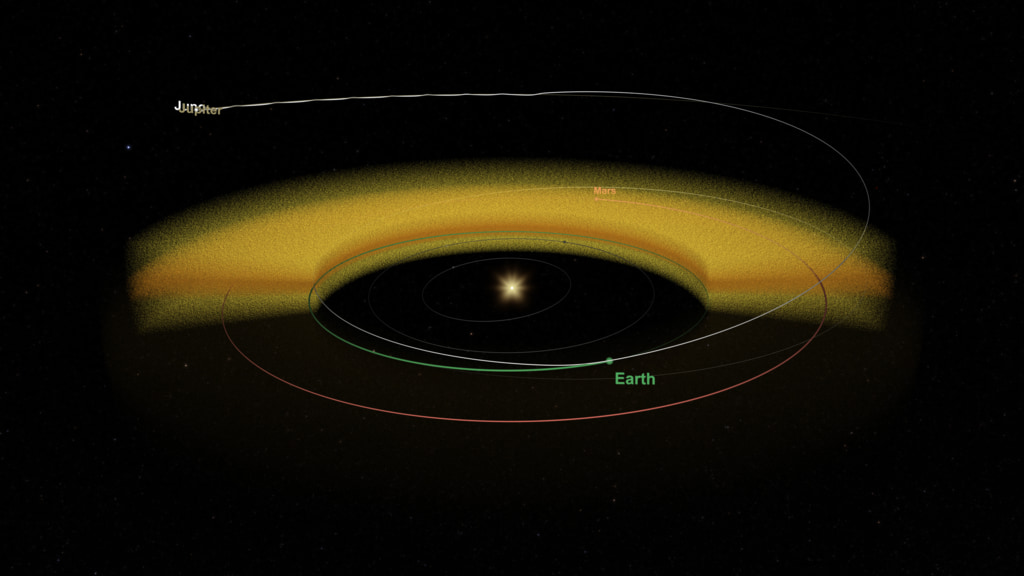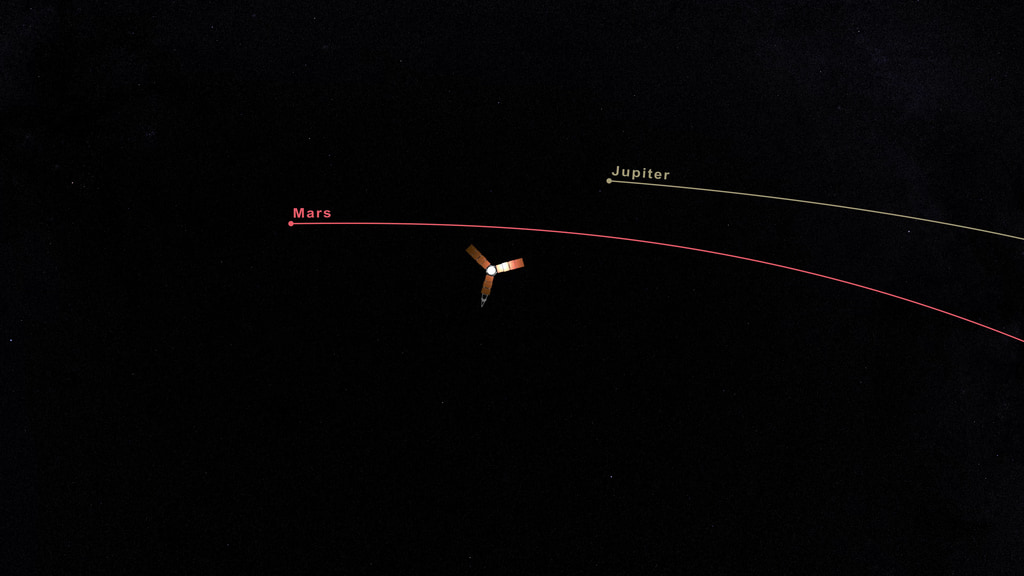Juno Discovers Mars’ Dust Storms Fill Solar System
NASA’s Juno spacecraft has made a serendipitous discovery: Mars may be ejecting dust into space, creating an interplanetary dust cloud that reflects sunlight, and which can be seen from Earth as the zodiacal light. Complete transcript available.
Original musical score by Vangelis, used with permission.
Watch this video on the NASA Goddard YouTube channel.
Look up to the night sky just before dawn, or after dusk, and you might see a faint column of light extending up from the horizon. That luminous glow is the zodiacal light, or sunlight reflected toward Earth by a cloud of tiny dust particles orbiting the Sun. Astronomers have long thought that the dust is brought into the inner solar system by a few of the asteroid and comet families that venture in from afar. But now, a team of Juno scientists argues that the planet Mars may be the culprit. An instrument aboard the Juno spacecraft serendipitously detected dust particles slamming into the spacecraft during its journey from Earth to Jupiter. The impacts provided important clues to the origin and orbital evolution of the dust, resolving some mysterious variations of the zodiacal light.
Learn more about this discovery.
Note: While this video in its entirety can be shared without permission, some individual imagery and the musical composition is obtained through permission and may not be excised or remixed in other products.
For More Information
See NASA.gov
Credits
Please give credit for this item to:
NASA's Goddard Space Flight Center
-
Producer
- Dan Gallagher (USRA)
-
Animator
- Michael Lentz (USRA)
-
Data visualizer
- Kel Elkins (USRA)
-
Writer
- Lonnie Shekhtman (ADNET Systems, Inc.)
-
Public affairs officer
- Rani Gran (NASA/GSFC)
-
Scientist
- John Connerney (NASA/GSFC)
-
Support
- David Agle (JPL)
-
Technical support
- Aaron E. Lepsch (ADNET Systems, Inc.)
Release date
This page was originally published on Tuesday, March 9, 2021.
This page was last updated on Wednesday, May 3, 2023 at 1:44 PM EDT.

